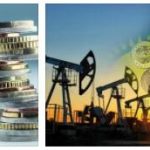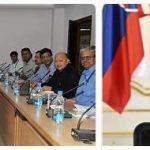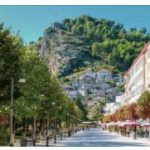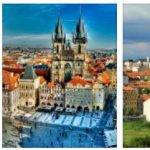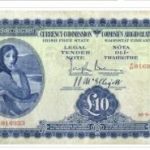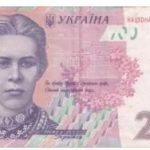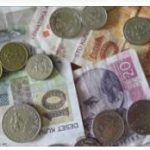At the time of independence (1960), Somalia, very poor in natural resources and almost entirely inhabited by nomads mainly dedicated to livestock farming, presented the typical characteristics of a country that had hitherto been subject to colonial rule. Some basic infrastructures had been built (canalization works and other irrigation works, opening of roads, improvements to the port of Mogadishu, etc.) and some, albeit modest, “development poles” had been established with the creation of experimental agricultural areas, in particular that of Villabruzzi (today Jawhar or Giohar). However, these initiatives had affected only limited geographical areas, along the Jubba (Giuba) and the Shabeelle (Uebi Scebeli), and the process of sedentarization and economic improvement, triggered by them, it had affected a very small number of Somalis. The first radical government programs of “refounding” the economic and social structures of the country began only in 1970, after Somalia had established itself as a Socialist Republic in October of the previous year. The new regime set as its objectives the achievement of self-sufficiency through the adoption of techniques more easily adaptable to the conditions of the local society, still strongly rooted in traditional life frameworks, the strengthening of rural areas, started the census of men to head of cattle, he tried to extend literacy and health care, and above all to stimulate the sedentarization process. However, the program was abruptly slowed down by the terrible drought of the years 1973-75 (particularly heavy for livestock) which favored a more massive intervention of cooperation and international financing: even in the context of support for agriculture and animal husbandry, they concentrated in the secondary sector, in particular for the benefit of extractive activities, in order to establish a basic industrial structure controlled by the State and above all in the field of infrastructures. The system of cooperation and international financing lost this positive value in concomitance with the change in alliances (the Ogaden War, 1977-79, and passage into the Western sphere of influence). The state budget was also aggravated by the sustenance of the Ogaden refugees during the 1980s. there was a worsening of the deficit commercial, due to the reduction in the export of products derived from animal husbandry. The second part of the decade saw the adoption of strict austerity measures, the suspension of aid from abroad (due to the violation of human rights by the regime), and the explosion of civil war in the northern regions of the country (1988): the economic and social conditions of the population gradually deteriorated. The events following the fall of the Siad Barre regime (1991) and the state of permanent civil war accentuated the conditions of poverty in Somalia: the GDP was 2,532 million US $ in 2007 and the GDP per capita of just US $ 291 (among the lowest in the world). In 2008 the Somali economy, also because of the power vacuum, was in serious condition based on agriculture of subsistence, on fishing and nomadic herding, depending largely on remittances and the illegal trade in weapons and drug.
ECONOMY: AGRICULTURE, FORESTRY, LIVESTOCK AND FISHING
The arable and arborescent crops covered 1.7% of the national territory in 2006; within the very modest agricultural area there is a rather clear distinction between areas occupied by food crops of immediate consumption, mostly local, and areas destined for commercial agriculture. After years of constant decrease, in 1984 agricultural production was growing, but the war events that afflict the country since 1991 and the economic choices to allocate the best lands to industrial crops deeply subject to changes in international prices, have practically halved production.. Traditional crops are represented by sorghum, millet, corn and some fruit and vegetables. Commercial agriculture is limited to a few areas along the Jubba (Giuba) and the Shabeelle (Uebi Scebeli): these areas can have permanent irrigation; the plantations produce bananas, sugar cane and, to a lesser extent, cotton. § Forests (2006) covered 12% of the land area and, even if they are mostly represented by poor woodlands, they provide a fair amount of wood, frankincense and myrrh, two typically Somali products, and gum arabic. § The zootechnical sector is fundamental, which can count on vast areas of grass and permanent pasture and is still the only source of subsistence for the majority of the population, however, forced, due to the scarcity of water, to a transhumance. The livestock heritage, reconstituted after the decimations due to drought and strongly tested by the spread of an infectious disease in the 1990s (on this occasion Saudi Arabia interrupted the imports of livestock, especially camels, from Somalia) is mainly composed of goats, sheep and camels, but also includes a fair number of cattle, widespread in less arid areas, close to rivers. § In periods of drought, an attempt was made to favor the fishing sector which still remains unprofitable.
ECONOMY: INDUSTRY AND MINERAL RESOURCES
According to allcountrylist, Somali industry is heavily penalized by the war and in 2007 it contributed only 7.3% of GDP production. The main activity is that of sugar, mainly operating in Jawhar (Giohar); there are also industries for the processing of skins and leather (tanneries, shoe factories) and the preservation of meat, oil mills, soap factories, dairy companies, fish canneries, small steel and mechanical plants, as well as an oil refinery built in Mogadishu in the 1979 (closed with the start of the conflict). § Mineral resources are almost entirely limited to iron extraction and geological prospecting conducted since the 1970s have revealed the presence of some deposits of gas and oil, too modest to be exploited. The salt reserves (saline near Mogadishu) and the gypsum deposits in Berbera are profitable. The production of electricity is equal to 270 million kWh per year, all thermal.

